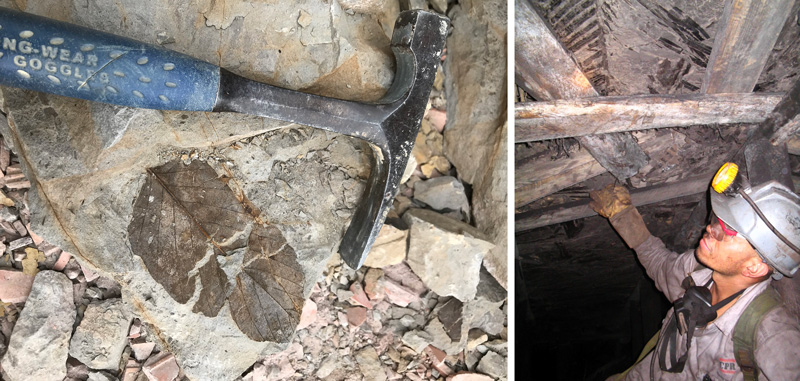The cradles of life in neotropical regions of the planet remain a mystery for geologists and paleontologists. But new research provides some clues, suggesting that the neotropics—a geographic area consisting of Central and South America, the Caribbean, and the tropical regions of southern North America—were significantly different before and after the Chicxulub asteroid impact 66 million years ago.
Neotropical rain forests shelter more than 90,000 plant species—nearly 50% of the total biodiversity on the planet. These ecosystems produce high rates of oxygen, in addition to sequestering carbon dioxide from the atmosphere, which helps balance the global climate.
Mónica Carvalho, a Colombian paleobiologist at the Smithsonian Tropical Research Institute in Panama, has spent the past 12 years exploring the forests and coal mines of her native country. With each trip, she’s collected thousands of fossil leaves and rocks containing microscopic pollen, all of which are evidence of ancient plant life.

Carvalho and her team amassed a collection of fossils from the Cretaceous and Paleocene, geologic time spans that were separated by the asteroid impact that killed off 75% of living species. The team quantified which plants disappeared and which ones survived the event and what sort of changes the ecosystem went through.
Their results indicated that during the Cretaceous, neotropical forests were characterized by open canopies and dominated by ferns, pines, and some flowering plants. But the landscape dramatically changed in the Paleocene, with forests mostly dominated by flowering plants, legumes, and closed canopies. This pattern informs the dense, dark forests we know today.
The paper was published in Science.
Solving the Puzzle
Most of the existing data on what happened after the Chicxulub impact come from research in North America and Patagonia, mostly because it is “relatively easy” to find intact fossils there, said Viviana Barreda, a paleontologist at the Museo Argentino de Ciencias Naturales Bernardino Rivadavia in Buenos Aires. The landscape there is “almost a steppe with no vegetation covering it, the dream of every geologist and paleontologist,” said Barreda, who wasn’t part of the study.
But finding preserved fossils in the tropics is extremely difficult because of the huge amount of vegetation that covers the ground. In addition, the tropics’ high rates of oxygen and humidity rapidly degrade pollen and spores, giving them less probability to be preserved.
For Paula Sucerquia, a geologist at the Federal University of Pernambuco in Brazil who was not involved in the new study, “this problem caused a gap in the paleontological history of Colombia,” which is why researchers didn’t know what had happened to plants in the neotropics after the impact. Carvalho’s results, however, “bring important information about the missing pieces in the paleontological puzzle.”
The analysis included 50,000 samples of fossilized pollen from 39 Colombian localities and more than 6,000 samples of fossilized leaves from the municipalities of Guaduas, Bogotá, and the Cerrejón coal mine in La Guajira.

Fossilized plants and pollen provide information about what happened in a specific place at a specific moment. “They’re like a photograph. They stay frozen [in time],” Sucerquia said.
Researchers also found evidence of how insects changed their feeding patterns. Although some Cretaceous plant species were selectively bitten, Paleocene plants displayed a lot more damage. “This shows that the forest changed not just in its structure and plant species but also in its ecological interactions,” Carvalho said.
Looking Back to Move Forward
After the asteroid impact, ashes and sediments of minerals like nitrogen and phosphorus covered the ground, increasing soil fertility and letting the most adaptive species, like flowering plants and legumes, take over forests. Also, the extinction of giant herbivorous dinosaurs allowed trees to grow closer together, forming dense patches of vegetation, researchers said.
These changes were likely not immediate, said Barreda. Fluxes of greenhouse gases also altered the composition of forests across the planet.
For Carvalho, the study’s results show how tropical ecosystems can bounce back after ecological catastrophes, but at the same time they demonstrate how slow the recovery process is.
“It took around 6 years for life to return, and although the ecological catastrophe that humans are causing through deforestation is not of the same magnitude, it follows the same path,” she said. “Life will definitely return, but will we be able to wait for it?”
—Humberto Basilio (@humbertobasilio), Science Writer






